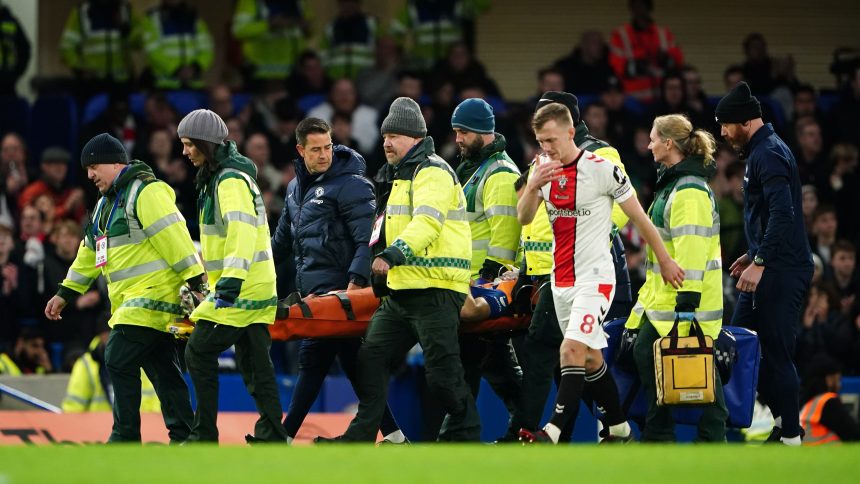Sports injuries can strike anyone, whether you’re just playing for fun on the weekends or pushing yourself as a professional. They’re frustrating, no doubt, but with the right recovery plan, you can get back to what you love—hopefully smarter and stronger next time.
Recovering well after a sports injury means finding the right mix of rest, treatment, and a slow, guided return to your sport. Recovery isn’t just about letting the hurt part heal—it’s also about regaining strength and making sure you don’t end up sidelined again for the same reason.
It’s really important to respect the recovery timeline, no matter your level. Sure, it’s tempting to jump back in, but taking shortcuts here often leads to more trouble down the road.
Essential Steps for Effective Sports Injury Recovery
Getting over a sports injury isn’t just luck—it’s about following a plan that mixes good medical care, rest, and the right rehab moves. The right approach can mean the difference between a full comeback and nagging issues that never quite go away.
Immediate Care and Management
If you get hurt, acting fast matters. The RICE method—rest, ice, compression, elevation—should be your go-to within the first day or two after an injury. Painkillers like ibuprofen or acetaminophen can help take the edge off and keep swelling down, but don’t overdo it.
If you’re dealing with serious pain, swelling, or just can’t move the injured part well, don’t wait it out—see a doctor or sports physio as soon as you can.
Importance of Rest and Gradual Return to Activity
Rest isn’t about lying around doing nothing—it’s about letting your body recover in the smartest way possible.
Usually, you’ll need a few days of real downtime at first, especially right after the injury. This helps keep things from getting worse when your body is at its weakest. After that, you can start doing other activities that don’t put stress on the injured area. Like, if you hurt your knee, maybe swimming instead of running. The goal is to keep fit without making things worse.
Trying to jump back into training too soon just isn’t worth the risk. It’s best to wait until you have full range of motion and almost all your strength back before going all in again.
Role of Physical Therapy and Rehabilitation
Physical therapists are kind of like recovery coaches. They build rehab plans tailored to your injury and your body, focusing on rebuilding strength, flexibility, and getting you moving the right way again.
At first, therapy is gentle—think pain relief and keeping things moving without pushing too hard. As you heal, the exercises ramp up, challenging your muscles and coordination more and more. Having a pro guide you through the process makes a real difference. They tweak your program based on how you’re doing—no two recoveries are exactly the same, after all.
Staying on top of your home exercises between sessions really speeds things up, though honestly, it can be tough to stay motivated. Most people need somewhere between 6 and 12 weeks to get back to full strength, but it depends on how bad the injury was.
Recover Smarter: Sports Injury Care in Singapore’s Top Clinics
If you’re seeking quality injury care, a top sports clinic in Singapore offers the perfect blend of medical expertise and cutting-edge rehabilitation technology. These clinics are well-equipped to help you recover faster and perform better.
Usually, you’ll find a team approach—sports doctors, physios, exercise experts—all working together to help you get back in the game. Some clinics offer high-tech treatments like shockwave therapy or hydrotherapy, and you might even get a detailed movement analysis if that’s your thing.
They’ll put together a rehab plan that fits your goals, whether you just want to walk pain-free or you’re aiming to compete again. A lot of clinics also focus on preventing injuries in the first place, which, honestly, more of us should pay attention to.
Getting an appointment is usually pretty quick, especially if your injury is urgent. Insurance sometimes helps, but you’ll want to double-check your plan before you go.
Optimizing the Healing Process After Injury
Recovering from a sports injury isn’t just about what you do in the gym or clinic. Your body needs the right nutrition, pain management, and a bit of patience to really heal well.
Proper Nutrition and Hydration
Food matters more than most people think when it comes to recovery. Your body needs protein—usually 1.6 to 2 grams per kilogram of body weight—to rebuild tissue after an injury.
Anti-inflammatory foods like salmon, berries, leafy greens, turmeric, and ginger can help with swelling and pain. And don’t forget water—2 to 3 liters a day is a good target to help your body repair itself.
Vitamins C and zinc are big players in helping your body make collagen, which is key for healing ligaments and tendons. Calcium and vitamin D are especially important if you’ve got a fracture.
If you can, try to get some protein in within half an hour after physical therapy. It’s one of those little things that can really help your muscles bounce back.
Pain Management Strategies
Managing pain is a balancing act. The RICE protocol is still the go-to for a lot of injuries, but there are other options too.
NSAIDs can help with pain and swelling, but be careful—they’re not meant for long-term use and can slow healing if you rely on them too much. Other pain relief methods? TENS units, hot and cold therapy, or gentle stretching if your doctor says it’s okay. Honestly, even just moving a little can make a difference, as long as you’re not making things worse.
Getting good sleep—like 7 to 9 hours a night—can help your body handle pain better and heal faster. Physical therapy often mixes pain relief with movement, so you’re not just lying there waiting to get better.
Monitoring Progress and Recognizing Setbacks
Tracking recovery works best when you use real, objective measurements. It helps a lot to keep a journal—just jot down your pain levels (maybe rate them from 1 to 10), how much you can move, and what you’re able to do each day.
Some important signs you’re moving forward? Less pain when you go about your day, better range of motion, strength coming back (especially compared to your good side), and being able to try out movements that feel closer to your sport. These markers can be subtle, but they’re worth noticing.
Of course, healing isn’t a straight line. You’ll have some days where things feel better, and others where you wonder if you’re backsliding. But there are a few red flags you shouldn’t ignore—like pain or swelling that suddenly gets worse, weird new symptoms like tingling or numbness, fever, or if your injury feels unusually warm. And if you notice you’re losing ground on things you’d already improved, that’s a signal to check in with a doctor.
It’s a good idea to keep up with your healthcare appointments, and honestly, bringing your symptom journal along can make those visits way more productive. Your provider will get a clearer picture, and you’ll probably feel more confident about what’s actually going on with your recovery.














